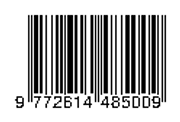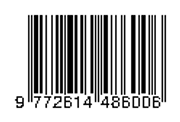Application Of Photodiodes As Sensors In Arduino-Based Automatic River Garbage Cleaner
AUTOMATIC RIVER GARBAGE CLEANER
DOI:
https://doi.org/10.26905/jeemecs.v8i1.15165Keywords:
Laser, Photodioda, Arduino Uno, Motor StepperAbstract
The river cleaning system is very concerning because of the amount of garbage that accumulates in the river, causing odor, dirt and flooding. In this regard, the idea arose to create a miniature river cleaning tool that is placed in the river or sluice channel.
The way it works is that the tool is installed in the river or sluice channel, the tool is like an iron spoke. Then a sensor is installed in front of the iron spoke and there is also a stepper motor that is tasked with rotating the iron spoke. If there is garbage that blocks the sensor, the sensor gives a signal to the Arduino, then the Arduino gives a command to the motor and the motor rotates the iron spoke to lift the garbage from the river and throw it into the trash can that has been provided.
Based on the test results, when the garbage sensor is not blocked by garbage, the stepper motor turns off and does not rotate. If the garbage sensor is blocked by garbage, the stepper motor turns on and rotates clockwise.
Downloads
References
[1]. Amira Arni, Susilawati, Pencemaran air Sungai akibat pembuangan sampah di desa bagan kuala tanjung beringin Kabupaten Serdang Bedagai, Nautical :Jurnal Ilmiah Multidisiplin,Vol 1 No 4, 2022.
[2]. Hartini, Sri Primaini, Nurhayani, Dimas Dibya Hartanto, Aplikasi Mikrokontroller Arduino Uno Dalam Rancang Bangun Kunci Pintu Menggunakan E-KTP, Jusikom :Jurnal Sistem Komputer Musirawas, Vol. 7 No. 1, 2022.
[3]. Zulkarnain Lubis, Lungguk Adi Saputra, Haikal Nando Winata,Selly Annisa, Abdullah Muhazzir, Beni satria, Mery Sri Wahyuni, KontrolMesin Air Otomatis Berbasis Arduino dengan Smartphone, Buletin Utama Teknik Vol. 14, No. 3, 2019.
[4]. Robby Yuli Endra, Ahmad Cucus, Freddy Nur Affandi, M. Bintang Syahputra,Model Smart Room dengan Menggunakan Mikrokontroller Arduino Untuk Efisiensi Sumber Daya, Jurnal Sistem Informasi dan Telematika, 2019.
[5]. Delvi Ayu Wulandari,Yulkifli, Studi Awal RancangBangun Colorimeter Sebagai Pendeteksi Pada Pewarna Makanan Menggunakan Sensor Photodioda, Pillar of Physics, Vol. 11 No. 2, 2018.
[6]. Joni Welman Simatupang, Ludfi Ahmad Prastyo, Zano Junior, Fernando, Pemanfaatan Sensor Fotodioda Berbasis Penguat IC LM358 Sebagai Pendeteksi Jarak Api Pada Saat Kebakaran, Serambi Engineering, Volume VIII, No.2, 2023.
[7]. Arvan Syariffudin, Ashari, Umi Pratiwi, Perancangan Alat Peraga Gerak Harmonik Berupa Bandul Matematis Menggunakan Sensor Photodioda Berbasis Arduino, Jurnal Pendidikan Sains dan Komputer, Volume 2, Number 1, 2022.
[8]. Protus Pieter Kalatiku dan Yuri Yudhaswana Joefrie, Pemrograman Motor Stepper dengan Menggunakan Bahasa Pemrograman C,MEKTEK” Tahun XIII NO. 1, 2011.
[9]. Budi Cahyo Wibowo, Fajar Nugraha, Stepper Motor Speed Control Using Start-Stop Method Based On PLC, Jurnal Teknik Elektro dan Komputer, vol.10 no.3, 2021.
[10]. Elvando Andha Elvaris Manalu, Perancangan Mesin CNC Acrylic Cutting 3 Axis Dengan Menggunakan Laser Tube CO2, Jurnal Teknik Mesin (JTM), Vol. 16 No.1, 2023.
[11]. Agus Muliawan, Mohd. Syaryadhi, Zulhelmi, Desain Prototipe Sistem Pemetaan Dasar Sungai Menggunakan Sensor Ultrasonik Berbasis Mikrokontroler ATMega328P, KITEKTRO: Jurnal Online Teknik Elektro, Vol.2 No.3, 2017.
[12]. Andik Bintoro, Perancangan Alat Pemantau Ruangan Menggunakan Kamera Mini CCTV Berbasis Sensor Gerak, Lentera Vol. 16. No. 19, 2016.
[13]. Ni Luh Putu Anggreni, I Wayan Supardi, Nyoman Wendri, Bel Cerdas Cermat Menggunakan Remote Control Wireless Berbasis MikrokontrollerAT89S52, Buletin Fisika Vol 15 No. 2, 2014.
[14]. Jepri, Hendrayudi, M.Kom, Salamudin, M.Kom, Rancang Bangun Sistem Keamanan Kendaraan Sepeda Motor Menggunakan Sidik Jari Berbasis Arduino Uno, JIK, VOL. 13, No.1,2022.
[15]. Slamet Purwo Santosa, R. Mas Wahyu Nugroho, Rancang Bangun Alat Pintu Geser Otomatis Menggunakan Motor DC 24, Jurnal Ilmiah Elektrokrisna Vol 9 No 1, 2021.
[16]. Wahyu Sulaeman, Erna Alimudin, Arif Sumardiono, Sistem Pengaman Loker Dengan Menggunakan Deteksi Wajah, Journal OfEnergy and Electrical Engineering (JEEE), Vol. 03, No. 02, 2022.
[17]. Muhammad Danindra Riski, Rancang Alat Lampu Otomatis di Cargo Compartment Pesawat Berbasis Arduino Menggunakan Push Button Switch Sebagai Pembelajaran di Politeknik Penerbangan Surabaya, Seminar Nasional Inovasi Teknologi Penerbangan (SNITP), 2019.
Downloads
Published
Issue
Section
License
Copyright (c) 2025 JEEMECS (Journal of Electrical Engineering, Mechatronic and Computer Science)

This work is licensed under a Creative Commons Attribution-NonCommercial-ShareAlike 4.0 International License.
Our ethic statements are based on COPE’s Best Practice Guidelines for Journal Editors.
Publication decisions
The editor is responsible for deciding which of the articles submitted to the journal should be published.
The editor may be guided by the policies of the journal's editorial board and constrained by such legal requirements as shall then be in force regarding libel, copyright infringement and plagiarism. The editor may confer with other editors or reviewers in making this decision.
Fair play
An editor at any time evaluate manuscripts for their intellectual content without regard to race, gender, sexual orientation, religious belief, ethnic origin, citizenship, or political philosophy of the authors.
Confidentiality
The editor and any editorial staff must not disclose any information about a submitted manuscript to anyone other than the corresponding author, reviewers, potential reviewers, other editorial advisers, and the publisher, as appropriate.
Disclosure and conflicts of interest
Unpublished materials disclosed in a submitted manuscript must not be used in an editor's own research without the express written consent of the author.
Duties of Reviewers
Contribution to Editorial Decisions
Peer review assists the editor in making editorial decisions and through the editorial communications with the author may also assist the author in improving the paper.
Promptness
Any selected referee who feels unqualified to review the research reported in a manuscript or knows that its prompt review will be impossible should notify the editor and excuse himself from the review process.
Confidentiality
Any manuscripts received for review must be treated as confidential documents. They must not be shown to or discussed with others except as authorized by the editor.
Standards of Objectivity
Reviews should be conducted objectively. Personal criticism of the author is inappropriate. Referees should express their views clearly with supporting arguments.
Acknowledgement of Sources
Reviewers should identify relevant published work that has not been cited by the authors. Any statement that an observation, derivation, or argument had been previously reported should be accompanied by the relevant citation. A reviewer should also call to the editor's attention any substantial similarity or overlap between the manuscript under consideration and any other published paper of which they have personal knowledge.
Disclosure and Conflict of Interest
Privileged information or ideas obtained through peer review must be kept confidential and not used for personal advantage. Reviewers should not consider manuscripts in which they have conflicts of interest resulting from competitive, collaborative, or other relationships or connections with any of the authors, companies, or institutions connected to the papers.
Duties of Authors
Reporting standards
Authors of reports of original research should present an accurate account of the work performed as well as an objective discussion of its significance. Underlying data should be represented accurately in the paper. A paper should contain sufficient detail and references to permit others to replicate the work. Fraudulent or knowingly inaccurate statements constitute unethical behavior and are unacceptable.
Originality and Plagiarism
The authors should ensure that they have written entirely original works, and if the authors have used the work and/or words of others that this has been appropriately cited or quoted.
Multiple, Redundant or Concurrent Publication
An author should not in general publish manuscripts describing essentially the same research in more than one journal or primary publication. Submitting the same manuscript to more than one journal concurrently constitutes unethical publishing behaviour and is unacceptable.
Acknowledgement of Sources
Proper acknowledgment of the work of others must always be given. Authors should cite publications that have been influential in determining the nature of the reported work.
Authorship of the Paper
Authorship should be limited to those who have made a significant contribution to the conception, design, execution, or interpretation of the reported study. All those who have made significant contributions should be listed as co-authors. Where there are others who have participated in certain substantive aspects of the research project, they should be acknowledged or listed as contributors.
The corresponding author should ensure that all appropriate co-authors and no inappropriate co-authors are included on the paper, and that all co-authors have seen and approved the final version of the paper and have agreed to its submission for publication.
Disclosure and Conflicts of Interest
All authors should disclose in their manuscript any financial or other substantive conflict of interest that might be construed to influence the results or interpretation of their manuscript. All sources of financial support for the project should be disclosed.
Fundamental errors in published works
When an author discovers a significant error or inaccuracy in his/her own published work, it is the author’s obligation to promptly notify the journal editor or publisher and cooperate with the editor to retract or correct the paper.










